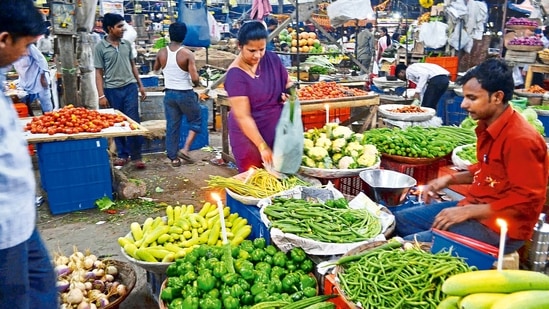Number theory: Four charts which explain inflation and its economic impact
The four charts explain in detail the larger macroeconomic takeaway from the July data for both Consumer Price Index a(CPI) and Wholesale Price Index (WPI).
July data for both Consumer Price Index (CPI) and Wholesale Price Index (WPI) is out now. What is the larger macroeconomic takeaway from these numbers? Here are four charts which explain this in detail.

Inflation has already peaked...
Both retail and wholesale inflation have been on a downward trajectory for two consecutive months now, suggesting that the peak of this price cycle is already behind us. CPI growth, which peaked at 7.8% in April , came down to 6.7% in the month of July. WPI growth, which peaked at an all-time high of 16.6% in May , stood at 13.9% in July. The moderation in WPI can be seen even on a month-on-month basis unlike CPI, which means that wholesale prices have seen a marginal decline even in absolute terms. To be sure, both CPI and WPI continue to be higher than their historic levels.
..., but it could become sticky going forward
The moderation in headline inflation print notwithstanding, there are areas of concern on the price front. The biggest problem is that the latest inflation phase is quiet broad-based in nature and unlikely to come down to acceptable levels with a fall in prices of a few commodities. This is best seen by looking at the trend in core-CPI – it measures the inflation for non-food non-fuel basket of CPI – and WPI for manufactured goods. Non-core items and non-manufactured items have played a major role in rise and fall in headline CPI and WPI numbers, but both core CPI and manufactured WPI also continue to be high compared to historical levels. This means that even after cyclical factors such as crude oil prices have eased, the headline inflation print will continue to remain sticky for some time given the broad based nature of inflation.
-- unless a significant easing in crude oil prices surprises positively.
In its August resolution, the monetary policy committee of the Reserve Bank of India reiterated its assumption of average crude prices being at $105 per barrel for the current fiscal year. However, crude oil prices have fallen significantly over the past weeks. Data from the petroleum ministry shows that the average price of India’s crude oil basket (COB) increased from $102.97 per barrel in April to $116.01 per barrel in June . This came down to $105.49 per barrel in July and for the first half of August, this price is $98.16 per barrel. Brent crude was trading at $94.75 per barrel on August 16 at 5 pm. If crude petroleum prices continue their downward trajectory -- and that is a big if, given the possibility of energy shortages during winters putting pressure on prices once again -- India can expect significant relief from inflation going forward.
The only flip side of moderating inflation could be slower growth in government revenues
This may seem counter-intuitive , given the fact that the governments, both at the level of centre as well as states, have been juggling with the difficult issue of fuel price taxes. However, inflation has also helped government revenue from another route, namely nominal income. Because taxes are a fraction of nominal income, inflation driven tailwinds help boost revenue for the government. Inflation has been an important factor in boosting revenue receipts such as under the Goods and Services Tax (GST). This has been a welcome change for the current government which faced a squeeze on taxes because of a collapse in nominal growth rates in the pre-pandemic period. Given the fact that nominal GDP numbers are more aligned to WPI than CPI, the future trajectory of wholesale inflation will be the critical factor as far as inflation’s revenue impact is concerned. To be sure, moderation in inflation is not the only headwind government revenues are likely to face going forward. “Growth could slow in 2HFY23, on the back of falling real purchasing power, weaker export volumes, and disruption in the informal sector”, Pranjul Bhandari, Chief India Economist at HSBC said in a research note dated August 14, projecting a “a below-consensus 6.8%” growth rate for 2022-23.
Stay informed on Business News, TCS Q4 Results Live along with Gold Rates Today, India News and other related updates on Hindustan Times Website and APPs
Continue reading with HT Premium Subscription









